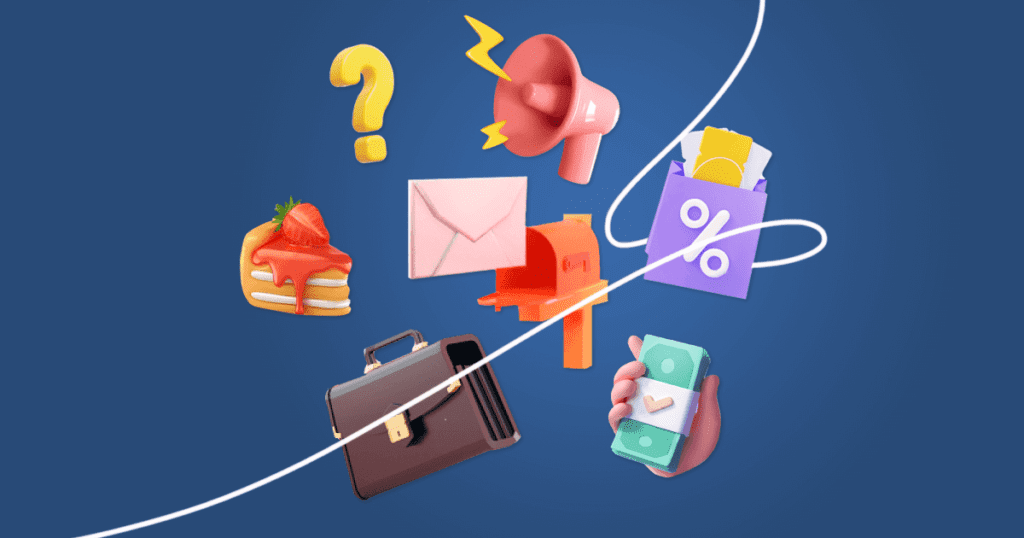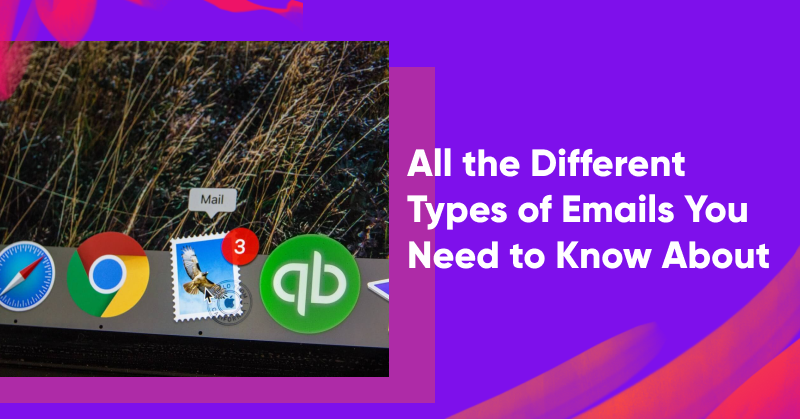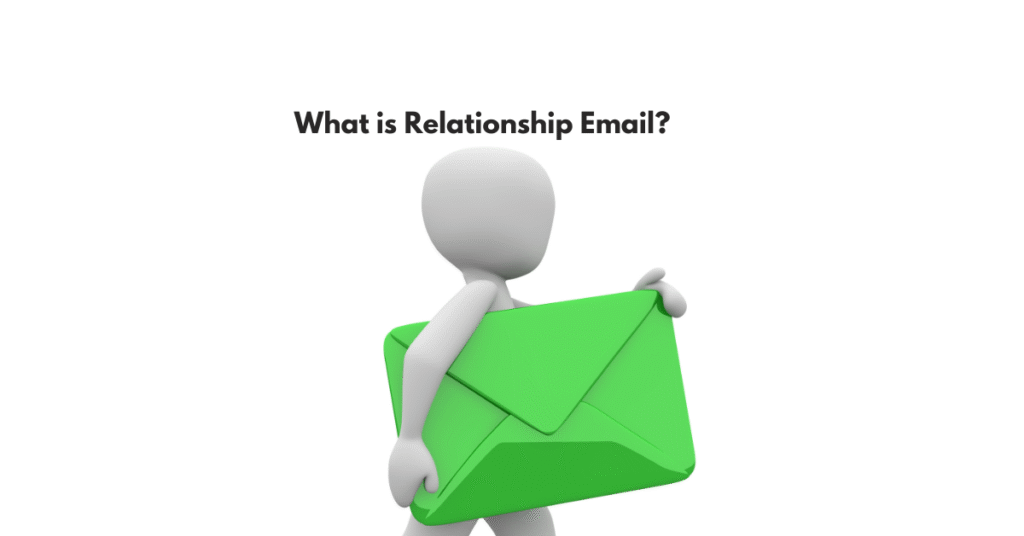Discover the power of the “relationship email” in email marketing. Learn how this special type of message fosters deeper connections with customers, builds trust, and boosts loyalty.
Email marketing is a powerful tool that can transform the way businesses connect with their customers. In the world of digital marketing, email is a superhero. It helps businesses build strong connections with their customers, and at the heart of this email magic lies a special type of message called the “relationship email.”
So, what exactly is a relationship email? It’s like a warm virtual hug from a brand to its audience, meant to create a deeper bond and make customers feel valued and appreciated. This powerful tool allows businesses to communicate more personally and meaningfully, building trust and loyalty with their audience.
Let’s dive deeper into the world of relationship emails and see how they can transform the way businesses connect with their customers.
What is a Relationship Email?

A relationship email is a type of email marketing strategy that aims to nurture a long-term relationship with customers. It focuses on offering value, engaging the recipient, and building trust over time. Unlike promotional emails that are sales-driven, relationship emails prioritize connection and conversation.
These types of emails can include:

- Newsletters: These provide updates, share informative content, and keep your brand at the top of the customer’s mind.
- Survey emails: Asking for customer feedback or opinions can help them feel valued and heard.
- Educational emails: Sharing knowledge related to your industry can establish your brand as a thought leader.
Why are Relationship Emails Important?
Relationship emails play a crucial role in email marketing for several reasons:
- Customer Retention: They foster customer loyalty by consistently providing value and creating an ongoing dialogue.
- Engagement: Relationship emails encourage interaction and engagement, strengthening the connection between the brand and the customer.
- Trust Building: By providing helpful, relevant content without overtly trying to sell, brands can build trust with their audience.
Key Elements of a Successful Relationship Email
Creating a successful relationship email requires the careful consideration of several factors:
- Personalization: Emails should be tailored to the recipient, using their name and referencing their past interactions with your brand.
- Value: Every relationship email should provide something of value, whether it’s helpful information, exclusive content, or a heartfelt thank-you.
- Clear and Concise: Messages should be straightforward and easy to understand to respect the recipient’s time and attention.
We will continue to delve into the topic by discussing the different types of relationship emails and offering tips for creating effective relationship emails. Stay tuned!
Types of Relationship Emails

Several types of relationship emails can help foster a connection between your brand and your customers. Here are the most common ones:
- Welcome Emails: These are your first impression and set the tone for your brand relationship. Welcome emails typically have a high open rate, making them a golden opportunity to make a positive impact.
- Educational Emails: These provide information about your product or industry, helping your customers make more informed decisions. By providing valuable information, you become a trusted advisor.
- Newsletter Emails: Regular newsletters can keep your customers informed about your brand, industry news, or other interesting topics. This regular touchpoint keeps your brand top of mind.
- Survey Emails: Asking for feedback makes your customers feel valued and engaged. It can also provide you with valuable insights.
- Celebration Emails: Birthdays, anniversaries, or milestones can all be good reasons to reach out and show your customers you appreciate them. These positive interactions can foster goodwill and loyalty.
| Type of Email | Purpose | Example |
| Welcome Emails | To make a good first impression and set the brand tone | “Welcome to [Your Brand], [Customer Name]! We’re excited to have you here.” |
| Educational Emails | To provide valuable information and establish your brand as a trusted advisor | “Here are the top five ways to get the most out of [Your Product].” |
| Newsletter Emails | To keep customers informed and your brand top of mind | “This week in [Your Industry]: The latest news and trends.” |
| Survey Emails | To engage customers and gather valuable feedback | “Tell us how we’re doing: Take our quick survey and get a 10% discount.” |
| Celebration Emails | To show customer appreciation and foster goodwill | “Happy Birthday, [Customer Name]! Here’s a special gift just for you.” |
How to Create an Effective Relationship Email
Creating a strong relationship email requires focusing on your audience and the value you can provide them. Here are some tips to get you started:
- Know Your Audience: The better you understand your customers, the better you can tailor your content to meet their needs.
- Be Authentic: Authenticity resonates with customers. Be honest, transparent, and true to your brand voice.
- Provide Value: Every email should offer something of value, whether it’s a piece of advice, a new perspective, or an exclusive offer.
- Engage with a Call to Action: Encourage your readers to take action. Ask a question, suggest they share your content, or prompt them to make a purchase with a compelling call to action.
- Optimize for Mobile: Many people check their emails on their phones. Make sure your emails look good and function well on smaller screens.
Implementing these strategies in your relationship emails will help you connect with your customers on a deeper level, leading to increased customer loyalty and more effective email marketing campaigns.
The Challenges of Relationship Email Marketing
Implementing a successful relationship email strategy is not without its challenges. Here are some of the most common issues marketers face, along with solutions to overcome them:
- Overwhelming Volume of Emails: Your customers likely receive dozens, if not hundreds, of emails every day. How can you make yours stand out? Start with a compelling subject line that immediately conveys the value your email offers.
- Maintaining Relevance: It’s essential that your emails are relevant to your audience. Use segmentation and personalization to tailor your emails to each recipient. Keep your content fresh and meaningful.
- Ensuring Deliverability: If your emails end up in the spam folder, they won’t get read. Be sure to follow best practices for email deliverability, like maintaining a clean mailing list and avoiding spammy language.
- Measuring Success: Email marketing metrics can be complex. Focus on the ones that matter most for your goals, such as open rate, click-through rate, and conversion rate.
| Challenges | Solutions |
| Volume of Emails | Use compelling subject lines. |
| Maintaining Relevance | Utilize segmentation and personalization. |
| Deliverability | Follow email deliverability best practices. |
| Measuring Success | Focus on key email marketing metrics. |
The Power of Relationship Emails
To summarise, a relationship email is a potent tool in your email marketing arsenal. It enables you to engage with your customers deeper, fostering a sense of community and loyalty. Relationship emails can improve customer retention, drive conversions, and elevate your brand’s reputation when effectively implemented.
However, creating a successful relationship email strategy takes effort and understanding. You need to know your audience, provide value, and overcome the challenges inherent in email marketing. Yet the payoff is worth it: a stronger connection with your customers and a more effective email marketing strategy.
Remember, the power of a relationship email lies not just in the information it conveys but in the ongoing conversation it fosters. In email marketing, a relationship email is more than just a message; it’s an invitation to connect and engage on a deeper level.
That concludes our exploration of the topic “In email marketing, what is a relationship email?” By understanding and implementing the concepts discussed, you can unlock a whole new level of engagement and success in your email marketing campaigns.
In the evolving world of digital marketing, staying connected with your customers is key. The relationship email provides a powerful and effective way to do just that. Happy emailing!
Frequently Asked Questions
1. How does email marketing build relationships?
- Personalization: Email marketing allows for personalization, which can help build a strong relationship with customers. By addressing customers by their name and sending content tailored to their interests, you build a stronger bond.
- Consistent Communication: Regular emails keep your brand on top of your customers’ minds, helping to build a relationship over time.
- Providing Value: Emails that offer valuable content, such as tips, insights, or exclusive offers, foster a positive relationship with customers as they begin to see your brand as a useful resource.
2. What are the types of emails in email marketing?
- Newsletter Emails: Regular updates or news about your business or industry.
- Promotional Emails: Emails specifically designed to promote a product, service, or offer.
- Welcome Emails: The first email a customer receives when they subscribe or sign up.
- Transactional Emails: These are triggered by a customer’s action, like purchase confirmation or password reset emails.
3. How do you write a relational email?
- Personalize: Use the recipient’s name and tailor the content to their interests or past behaviour.
- Engage: Ask questions, invite responses, or include interactive content.
- Provide Value: Share useful information or exclusive offers.
- Be Authentic: Write conversational and let your brand personality shine through.
4. What are the 5 steps of email marketing?
- Identify Your Audience: Understand who your target customers are and what they’re interested in.
- Create a Mailing List: Collect email addresses from potential customers.
- Design Your Email: Craft a compelling message with a clear call-to-action. Remember to personalize and segment your email content.
- Send Your Emails: Use an email marketing platform to schedule and send your emails.
- Measure Results: Track open rates, click-through rates, and conversions to gauge the success of your email marketing efforts and refine your strategy accordingly.

